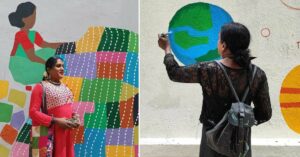The Italian Artist Who Is Using Sculpture To Raise Awareness About Sex Trafficking In India
An Italian artist shows her thoughts against sex trafficking in India through sculptures. Know more about her mesmerizing work and her efforts to bring a change.
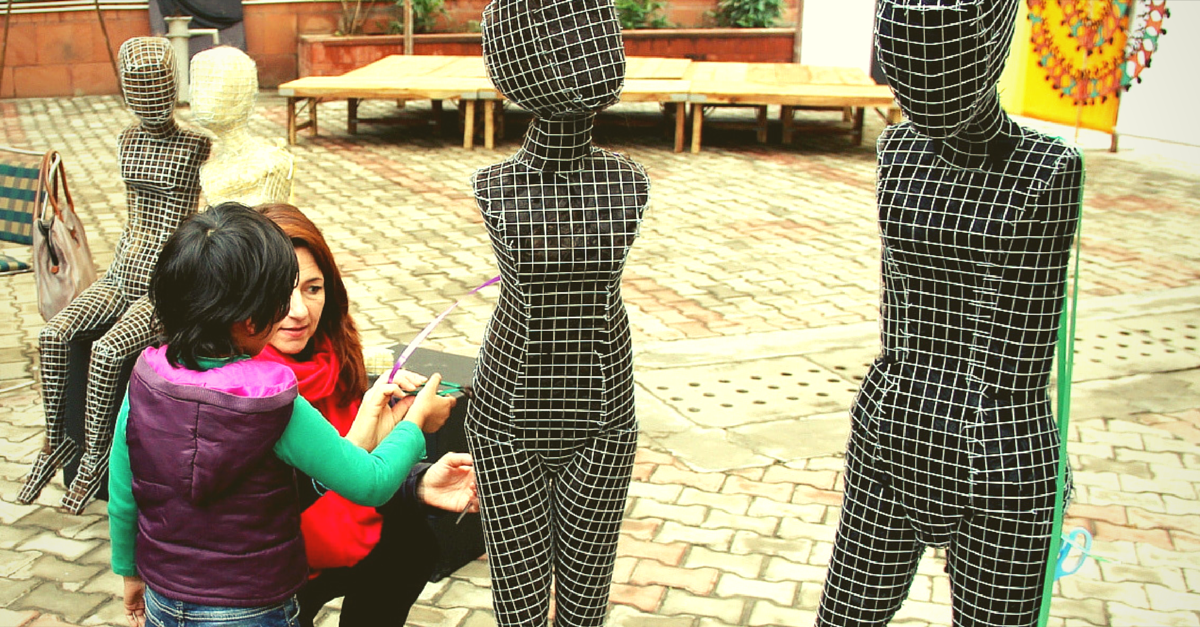
An Italian artist shows her thoughts against sex trafficking in India through her unique sculptures. Know more about her mesmerizing work and her efforts to bring a change.
The black figure of welded wire mesh instantly grabs one’s attention. It has a face albeit without any distinct features, there are no arms, and the core, curiously, is made up of black synthetic hair. This is talented feminist artist and sculptor Janine Von Thungen’s latest installation piece created with an aim to “spread awareness and give added visibility to the grave issue of sex trafficking”. To Thungen, the figure represents a teenage girl, who is trapped in the “rough fabric of wire mesh even though her soft, pliable core is visible to everyone”. This, according to the artist, is how young girls caught in the racket of sex trafficking are really like.
Thungen’s installation is part of a three-piece collection that she has quite appropriately called, ‘Be Aware’. The inspiration behind them is the work done by well-known activist Ruchira Gupta’s Apne Aap Worldwide, an anti-trafficking organisation based in Delhi.
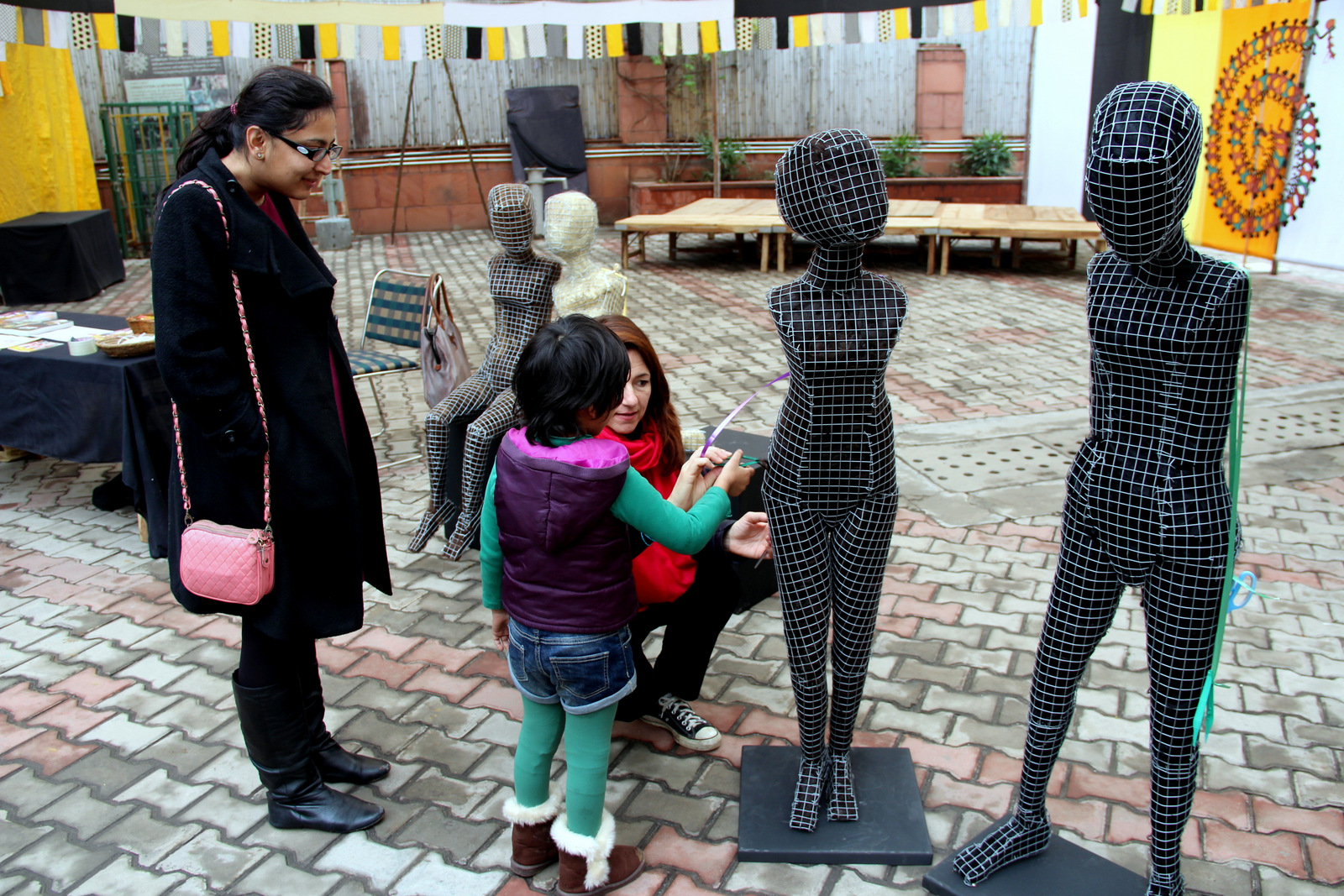
Speaking about their collaboration Gupta shares, “This series explores the spirit of partnership not just between the East and the West or between an Italian artist and an Indian activist but between two women. In fact, it is the teamwork and exchange of ideas between two women which is extremely important to bring about a change in consciousness.”
Enthused about bringing her kind of art to the general public and using it to further the discourse on sex trafficking and slavery, Thungen couldn’t agree more with Gupta’s observations. “Many of my colleagues and curators back home were strongly discouraging me to use my art as a medium of social activism. They were convinced that partnering with a non government organisation to be part of such an awareness building exercise would end up devaluing my art. Yet, I remained adamant. I wanted to make a difference,” she reveals.
Of course, art history is strewn with examples of works born out of social movements. One of the most famous paintings by legendary artist Pablo Picasso, ‘Guernica’, depicts the sufferings of people during the Spanish Civil War in 1937. Citing more such examples from India, Gupta talks about how the late M.F. Hussain strongly believed that art should be made freely accessible to the people. This line of thinking, which was influenced by socialism, squarely challenged the status quo of the day. Despite being a practicing Muslim, Hussain had painted characters from the Hindu mythological epic ‘Ramayana’ on huge canvases, mounted them on bullock carts and taken them around the country. This move revolutionised the whole thought process regarding people around art in India, and, at the same time, made him a household name as well.
“The same goes for Somnath Hore,” elaborates Gupta, “who painted Bengal Famine when he was just 22 years old. Like Hussain and Hore there have been many artists whose works were rooted in social movements or were linked to them, directly or indirectly. There were the Progressive artists in erstwhile Bombay who had formed a group. They were iconoclasts who asked questions on religion from society.
By associating themselves with these movements they managed to build a consciousness, which, in turn, gave the movement a boost. It was like a circle in motion to change the way we think.”
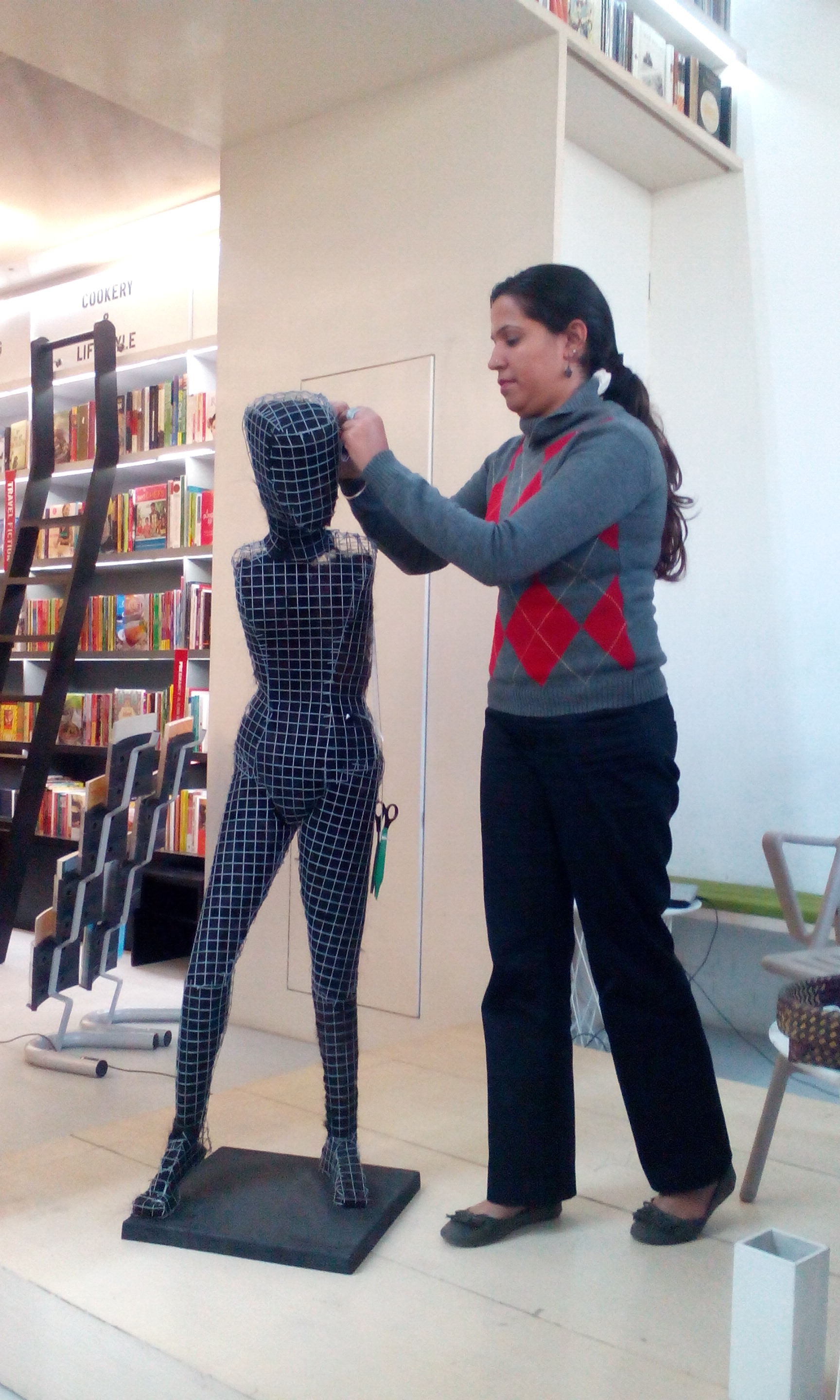
Thungen, too, is an artist who likes to break the mould, think out of the box, and wants people to freely interact with her installation rather than merely admire it from a distance. The rather unusual use of synthetic hair in the installation was a conscious decision. “Hair has so much cultural significance in India. In the mythological stories, there are instances where a woman’s head is shaved to punish her; desexualise her. There are so many stories around hair, it is an emotive subject,” she says.
It is the synthetic hair that also adds an interactive dimension to her piece. She encourages viewers to walk up to the armless sculpture and snip a few strands to preserve as a take back. “We tie up the strands with a ribbon and pack it in a small packet that people can keep with them. The hair acts as a metaphor as well as a memory that will force people to confront the reality of sex trade in which millions of young girls are trapped today,” explains the Germany born artist.
One look at the statistics on sex trafficking and you know why Thungen is determined to start up a widespread dialogue on the issue. According to Central Bureau of Investigation in India, there are three million women trapped in prostitution of which 1.4 million are children.
Moreover, a report by the United Nations Centre for Development and Population Activities indicates that approximately 200 new girls and women enter the domestic sex industry every day, implying an annual intake of about 70,000. Red-light areas reportedly exist in almost all of the country’s 640 districts even though the human trafficking industry remains highly secretive and clandestine, and crimes against women and children are mostly under-reported and untraced.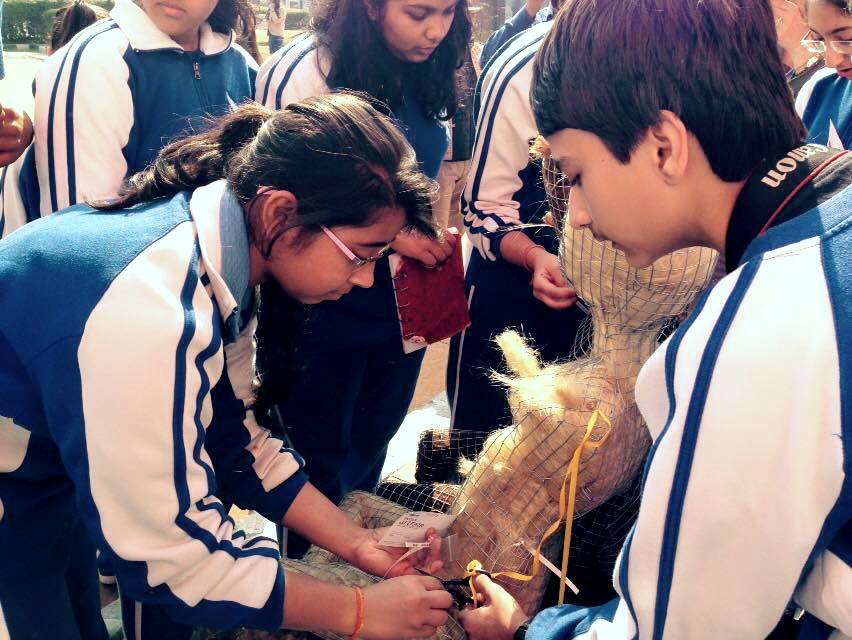
But how did Thungen connect with Apne Aap, which resulted in the creation of such heartfelt pieces? It was nearly two years ago that she met Gupta, founder of Apne Aap Women Worldwide, who arranged for her to visit a children’s home in Najafgarh, a bustling urban village on the fringes of Delhi. “The children we met there were part of family based prostitution. Some of them had been told that they have to only get married and become a prostitute,” says Jasneet Kaur, an Apne Aap Advocacy Associate, who took the artist around.
Thungen, 50, a mother of two daughters, was shocked and surprised to hear that. “The girls had dreams… of becoming doctors, teachers, seamstresses, even make-up artists! But tragically this world of possibilities was not open to them. Like all teenagers, they, too, were fun-loving, mischievous and liked it when adults took them seriously and showered them with attention,” she recalls. It was this evocative interaction that prompted her to create the sculptures, representative of all defenceless teenage girls, who end up falling prey to trafficking and prostitution.
But she wasn’t content with simply making the sculptures – her ultimate idea was to get people thinking. The journey of exhibiting these pieces began last year in Rome, Italy, when Thungen showcased them for young high school students. To assess their extent of knowledge on the issue, she conducted discussions where she asked the teenagers if they knew about sex trafficking and whether they were aware of what Italian Constitution said on the issue. “In this way,” she says, “we informed them about what the Constitution says about sex trafficking, about outfits like Boko Haram, the condition of people enslaved around the world. Unlike India, young people in Italy are not very aware of these things.”
It is details like these, stresses Gupta, that they want people who interact with the sculptures in India to know as well. Whereas Thungen’s armless girl was on display across various venues in Delhi in January-February 2015, including the basti where she found her inspiration, it is currently housed in Apne Aap’s Delhi office before further plans for showcase are chalked out.
With a wide smile of optimism, Thungen concludes, “I hope when I visit India next, I will find the wire mesh empty and many more people around me armed with knowledge about sex trafficking and agenda to curtail it.”
Like this story? Or have something to share? Write to us: [email protected], or connect with us on Facebook and Twitter (@thebetterindia).
This story made me
- 97
- 121
- 89
- 167
Tell Us More
We bring stories straight from the heart of India, to inspire millions and create a wave of impact. Our positive movement is growing bigger everyday, and we would love for you to join it.
Please contribute whatever you can, every little penny helps our team in bringing you more stories that support dreams and spread hope.







